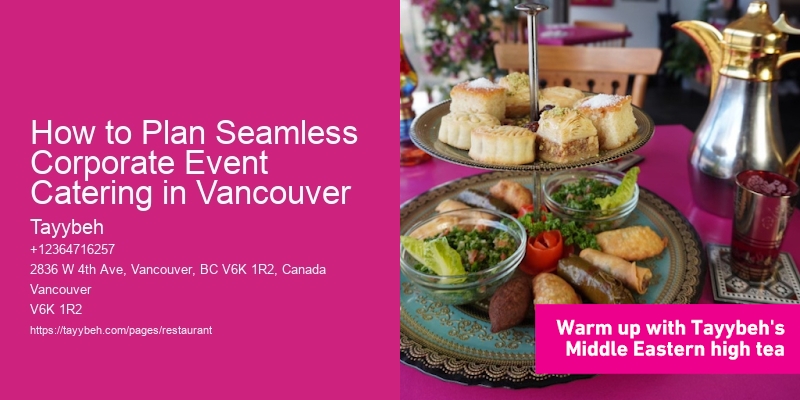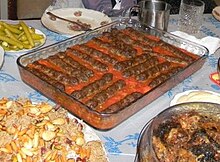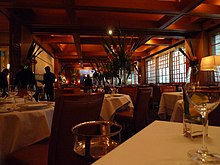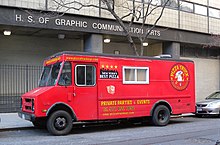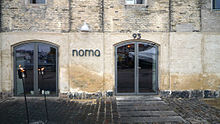Determine the Scope and Size of Your Corporate Event
Oh, planning a corporate event in Vancouver? Explore Vancouver Catering for Conferences and Celebrations here. That's a big deal, you know? But before you dive into the nitty-gritty of catering, you've got to nail down the scope and size of your event. I mean, it's not like you can just wing it! (Well, you could, but let's not think about that disaster, eh?)
First thing's first - how many mouths are we feeding? Is it a cozy little team-building lunch for 10, or are we talking about a swanky gala for hundreds? Once you've got a headcount, or at least a ballpark number, you're in a much better place to make decisions. And remember, it's not just about the number of guests; it's about who they are. If your CEO's gonna be there, you can't exactly serve pizza and soda, can you? (No offense to pizza, it's delicious, but you know what I mean.)
Now, let's consider the venue. Vancouver's got some stunning places, but they ain't all created equal. Some have their own catering staff, others require you to bring in outside food. Make sure you're clear on that - it's kinda important! And while we're at it, think about the layout. Is there enough space for a buffet, or should you opt for plated meals? You don't want guests playing musical chairs just to grab a bite!
And, of course, let's not forget about the budget. Ah, the dreaded B-word! Catering delivery services Food safety standards But seriously, you can't ignore it. There's no point dreaming up a feast fit for royalty if your wallet's got more moths than money. Be realistic, and make sure you're getting the most bang for your buck. (Wow, catering can feel like a balancing act, huh?)
In the end, it's all about knowing your audience and your limitations. Once you've determined the scope and size, everything else should fall into place. Just keep your cool, plan carefully, and hey, don't be afraid to ask for help! After all, a seamless event is a team effort. And when that glorious day comes and everything goes off without a hitch, you'll breathe a sigh of relief and think, "We did it!"
Understand Your Audience and Catering Preferences
Planning a seamless corporate event catering in Vancouver starts with a fundamental step - understanding your audience and their catering preferences. You know, it's not just about picking a menu (though crucial) but ensuring that what's served resonates with the attendees' palates and dietary requirements. Oh, and let's not forget the ambiance too!
First off, you gotta dive into who's coming to your event. Are they health-conscious folks, or maybe they've got a sweet tooth? You can't simply serve a one-size-fits-all meal; that approach is a recipe for disaster! It's essential to survey or collect some data beforehand. Perhaps, send out a pre-event questionnaire? That could give you a good idea of what they like and dislike.
Now, when it comes to the preferences, it's a tricky business. You've got vegans, vegetarians, and meat-lovers all in one room! And allergies – oh boy, they cannot be ignored! I mean, imagine the horror if someone had a reaction because the gluten-free option wasn't really gluten-free! You need to cater to all these needs without making it obvious that some folks have "special" food. The goal is to let everyone enjoy their meal, oblivious to these behind-the-scenes complexities.
And here's the thing, you can't just think about the food itself. The service style matters a ton! Buffet, plated, family-style – each has its own vibe. Vancouver's diverse, so your service style needs to match the formality of the event and the comfort of the guests. A casual start-up shindig? Buffet might be the way to go. High-end corporate gala? Plated dinners add that touch of class.
Don't forget about the local flavors too! Vancouver's got a smorgasbord of culinary delights. Client relationship management Incorporating local and seasonal ingredients doesn't just wow the attendees, but it's also a nod to the vibrant local food scene. And that's something to be proud of, isn't it?
And, oh! Let's not mess up with the budget, shall we? You can't just splash the cash without keeping an eye on it. It's about being cost-effective, not cheap. Find that sweet spot where quality meets affordability, and you're golden.
In summary, understanding your audience is more than just a step – it's an art. Family-style dining It's about negating assumptions and truly catering to the diverse tastes and preferences of your guests (and yes, that pun was intended!). Plan with care, execute with finesse, and voila – you'll have yourself an event to remember!
Research and Select Reputable Catering Companies in Vancouver
When it comes to planning a corporate event in Vancouver, the catering can make or break the experience. Vegan catering It's not just about satisfying hunger-it's about creating an atmosphere, offering a taste of the local cuisine, and ensuring that every guest leaves with a positive impression of the event.
How to Plan Seamless Corporate Event Catering in Vancouver - Food styling
- Eco-friendly catering
- Vegan catering
- Food safety standards
- Family-style dining
- Catering for large groups
- Catered events
- Event sponsorship
- Catering for retreats
- Wedding catering
- Catering delivery services
- Catering staff
- Catering services
- Food styling
- Gluten-free catering
- Client relationship management
- Catering equipment rental
First off, you've got to do your homework. Start by asking around; word of mouth is still one of the best ways to find a reliable caterer. Colleagues and friends might have some top-notch recommendations (or warnings on who to avoid). And don't just take their word for it, check out online reviews. But here's the thing: don't just skim the ratings. Dive deep into the comments to get a sense of the caterer's strengths and potential weaknesses.
Now, let's talk about what you shouldn't do. Event sponsorship Don't just go for the first name that pops up on Google. It's like, you wouldn't marry the first person you match with on a dating app without a proper chat, right? It's crucial to compare services, prices, and menus. And don't ignore the small print! You need to know what's included in the price to avoid any nasty surprises later on.
Once you've shortlisted a few (because putting all your eggs in one basket is never a great idea), it's time to reach out. Hit 'em up with an email or, better yet, give them a call. This is your chance to ask about their experience with corporate events, their flexibility with menus, and how they handle dietary restrictions. And if they're not willing to accommodate your needs, well, that's a red flag right there!
Here's a pro tip: schedule a tasting! You wouldn't buy a car without taking it for a spin, and you shouldn't book a caterer without sampling their goods. This is where you get to be a bit of a food critic. Is the flavor there? What about the presentation? It has to look good, too!
And don't forget to talk logistics. A great caterer in Vancouver needs to know the ins and outs of your venue. Gluten-free catering Will they need to bring in extra equipment? Can they work with the kitchen space? It's all in the details.
So, there you have it! A little bit of legwork (and a dash of common sense) is all it takes to find the perfect caterer for your corporate event in Vancouver. And when you do find that gem of a caterer, it'll be like hitting the jackpot! Just imagine the sigh of relief when the big day comes, and everything runs smoother than a fresh jar of peanut butter. Now, that's what I call a success!
Set a Budget and Discuss It with Potential Caterers
When you're diving into the planning of a corporate event in Vancouver, one crucial step that can't be overlooked is setting a budget for the catering! It's like, you know, the backbone of the whole shebang, cause let's face it, folks come for the networking, but they stay for the food.
Now, don't just pull a number out of thin air. You gotta be savvy, do your homework. What's the headcount? Are we talking fancy sit-down dinner or a casual buffet? Each detail, it's gonna affect the bottom dollar. And hey, remember to keep a little wiggle room for those unexpected costs (they always pop up, don't they?).
Once you've got that budget kinda nailed down, it's time to play matchmaker with potential caterers. You can't be shy! Lay it all out on the table. Tell 'em, "Here's what I've got to spend. What can you do for me?" It's a bit of give and take, really. They might come back with a counteroffer, maybe throw in some extras, or perhaps they'll suggest alternatives that'll work better for your budget.
Oh, and don't forget to chat about the small stuff, like dietary restrictions (you know someone's always gluten-free these days) or if you need extra servers. It's all in the details, after all.
But here's the kicker – stay firm with your limit. It's easy to get swayed by fancy hors d'oeuvres or an exotic dessert, but you don't wanna end up with a case of budget blowout. Stick to your guns, and you'll find the right caterer who can whip up a feast without cooking your wallet.
So there you have it. Setting a budget and discussing it with potential caterers might not be the most glamorous part of event planning, but it sure is essential. Get it right, and you're on your way to a successful corporate event that'll have everyone raving (and not just about the mini quiches).
Decide on the Catering Style That Suits Your Event
Ah, planning a corporate event in Vancouver, that's quite the task, isn't it? One of the big considerations you'll need to tackle is the catering style. It's gotta match the vibe of your event, right? So, let's dive into the nitty-gritty of choosing the perfect one!
First off, you've got to consider your event's format. Is it a formal sit-down dinner or a more laid-back mingling affair? If you're hosting a gala or an awards ceremony, then a plated service might just be what the doctor ordered! It adds a touch of class and ensures that everyone gets their meal at the same time. But watch out, it can be a bit pricey and requires more staff.
Now, if you're leaning towards a networking event, then a buffet could be your best bet. It encourages guests to move around and chat, and let's be honest, who doesn't enjoy a bit of variety on their plate? Just make sure there's enough space for people to move about without bumping elbows; nobody likes a traffic jam when they're hungry!
For those opting for a casual workshop or a team-building session, consider a family-style spread or even a food truck that could pull right up to your venue. It's fun, it's hip, and it definitely breaks the ice!
Oh, and don't forget about dietary restrictions. You don't want to leave anyone out! Make sure there's something for the vegetarians, vegans, and gluten-free folks. A little attention to these details goes a long way, and it shows you care.
But, whatever you do, don't just pick a style because it's trendy! It has to fit with your event goals and, of course, your budget. There's no point in splurging on a fancy seafood bar if all you need is some good ol' sandwiches and salads (and let's be real, sometimes that's all people really want).
In conclusion, deciding on the catering style for your corporate event in Vancouver is like choosing the right outfit for a big day; it's all about the right fit!
How to Plan Seamless Corporate Event Catering in Vancouver - Gluten-free catering
- Food styling
- Gluten-free catering
- Client relationship management
- Catering equipment rental
- Catering delivery services
- Catering staff
- Catering services
- Food styling
- Gluten-free catering
- Client relationship management
- Catering equipment rental
- Catering delivery services
- Catering staff
- Catering services
- Food styling
- Gluten-free catering
Consider Special Dietary Requirements and Menu Flexibility
When planning a corporate event in Vancouver, it's crucial to consider the diverse palates and dietary needs of your guests. Ah, it's no small feat!
How to Plan Seamless Corporate Event Catering in Vancouver - Catering delivery services
First off, let's dive into special dietary requirements – and trust me, they're not to be taken lightly. You've got vegetarians, vegans, gluten-free folks, and those with allergies or religious restrictions. It's a whole spectrum! So, when you're chatting with caterers, it's essential to ask (and ask again!) about their ability to accommodate these needs. You don't want to end up with a guest list full of happy meat-eaters but leave the vegans munching on, well, just lettuce.
Now, onto menu flexibility – because, let's face it, not everyone's going to be thrilled with a set menu. Imagine you're at a corporate event, and all that's on offer is seafood, but you can't stand the stuff. Not a pleasant thought, right? That's why it's crucial to have options. A good caterer in Vancouver (and there're plenty of 'em!) will provide a range of choices for each course. And we're not just talking different, but equally delightful, options to cater to all tastes and preferences.
Oh, and don't forget to factor in the seasonality of food! Fresh, locally-sourced ingredients can really elevate a meal – plus, it's a great way to support local businesses.
To sum it up, when you're knee-deep in planning that corporate event, remember: a one-size-fits-all approach to catering just won't cut it. By ensuring special dietary requirements are met and offering a flexible menu, you're on the right track to a successful event. And when that happens, you can sit back, enjoy a well-deserved pat on the back, and watch your guests relish every bite! (That's the plan, anyway!)
Coordinate Logistics and Communication with the Caterer
When it comes to planning a seamless corporate event catering in Vancouver, one of the most critical aspects is to coordinate logistics and communication with the caterer-no small feat, I assure you! It's a dance of details that requires a keen eye and, honestly, a lot of patience (not to mention a bit of charm).
Firstly, you gotta understand the venue because, trust me, not every place is gonna be a walk in the park. Some venues have strict rules that can throw a wrench in your plans if you're not careful. I've seen it happen, and it ain't pretty! You need to ask the right questions: Where will the food be prepped? Catering services Is there enough space for the caterer to work their magic? What about power outlets and kitchen facilities? Oh, and don't get me started on parking for the catering vans-that's a headache you don't want.
Now, let's chat about the menu (which, by the way, is always a crowd-pleaser or a deal-breaker). You can't just pick what you like; you've got to consider dietary restrictions and preferences. And remember, folks in Vancouver love their local and sustainable options! So, when you're hashing out the menu with the caterer, make sure you're both on the same page. Miscommunication here can lead to a disaster! Imagine a seafood extravaganza and forgetting to account for shellfish allergies-yikes!
Ah, and timelines, my friend, are the backbone of the event. They're not to be messed with! Work out a detailed schedule with the caterer, and please, for sanity's sake, include some buffer time. Things will go awry; it's Murphy's Law or something like that. But with a solid plan, at least you won't be caught completely off guard.
Let's not forget the importance of regular check-ins. They're like those little nudges that keep everything moving smoothly. It's not about micromanaging (nobody likes a control freak), but rather ensuring that everyone's clued in. Drop an email, make a call, send a pigeon if you have to-just keep the lines of communication open!
In conclusion, if you're coordinating logistics and communication with a caterer for a corporate event in Vancouver, it's all about the details and staying on your toes. Get ready to juggle and pivot, and don't forget to breathe (because sometimes, that's the best we can do, right?). And when the event goes off without a hitch, you can sit back, maybe even enjoy a canapé, and think, "Well, that wasn't so bad!" After all, who doesn't love a challenge?
Plan for On-Site Execution and Contingencies
When it comes to planning seamless corporate event catering in Vancouver, a detailed plan for on-site execution is as crucial as the menu itself (dare I say, even more so?).
How to Plan Seamless Corporate Event Catering in Vancouver - Catering for large groups
- Catered events
- Event sponsorship
- Catering for retreats
- Wedding catering
- Catering delivery services
- Catering staff
- Catering services
- Food styling
- Gluten-free catering
- Client relationship management
- Catering equipment rental
- Catered events
- Event sponsorship
- Catering for retreats
- Wedding catering
First, let's talk about the venue. Vancouver's got its fair share of spots, each with its own set of quirks and perks. You've gotta know the ins and outs of your chosen location like the back of your hand. Where will the buffet stations go?
How to Plan Seamless Corporate Event Catering in Vancouver - Corporate events
- Gluten-free catering
- Client relationship management
- Catering equipment rental
- Wedding catering
- Catering delivery services
- Catering staff
- Catering services
- Food styling
- Gluten-free catering
- Client relationship management
- Catering equipment rental
- Wedding catering
- Catering delivery services
- Catering staff
- Catering services
Now, let's chew on the staff plan. Catering staff Timing is everything, and there's no room for slacking. The servers should be briefed, efficient, and ready to zigzag through a sea of suits with the grace of a ballet dancer and the speed of a cheetah. But hey, nobody's perfect. A dropped tray isn't the end of the world (though it sure feels like it at the moment, doesn't it?). What's key is how the team handles it. Corporate events Quick clean-up, a dash of charm, and we're back in business!
Contingencies, oh the dreaded contingencies! Weather, traffic jams, last-minute dietary restrictions-you name it, Vancouver's thrown it our way. But a solid plan doesn't ignore these possibilities; it embraces them with open arms (and maybe a slight grimace). Got an outdoor event? Better have those tents on standby.
How to Plan Seamless Corporate Event Catering in Vancouver - Catering delivery services
- Client relationship management
- Catering equipment rental
- Gluten-free catering
- Client relationship management
- Catering equipment rental
- Gluten-free catering
- Client relationship management
- Catering equipment rental
- Gluten-free catering
- Client relationship management
- Catering equipment rental
- Gluten-free catering
- Client relationship management
- Catering equipment rental
- Gluten-free catering
The trick is to not let 'em see you sweat. Catered events Act like you've got an ace in the hole even if you're improvising faster than a jazz musician in a jam session.
How to Plan Seamless Corporate Event Catering in Vancouver - Catering consultations
- Client relationship management
- Event planning
- Gourmet catering
- Affordable catering
- Interactive catering stations
- Event sponsorship
- Seasonal catering
- Catering for non-profits
- Family-style dining
- Catering equipment rental
- Catering staff
- Eco-friendly catering
- Party planners
- Signature dishes
- Culinary events
- Networking events
- Catering for retreats
- Sit-down dinner
- Catering menu
In conclusion, while you can't predict everything, you sure can prepare for a lot.
How to Plan Seamless Corporate Event Catering in Vancouver - Eco-friendly catering
- Corporate events
- Catering for festivals
- Professional chefs
- Catering consultations
- On-site cooking
- Venue partnerships
- Sustainable catering
- Catered brunches
- Catering services
- Themed catering
- Party catering
- Wedding catering
- Food trucks
- Catering menus for events
- Gluten-free catering
- Catering for anniversaries
